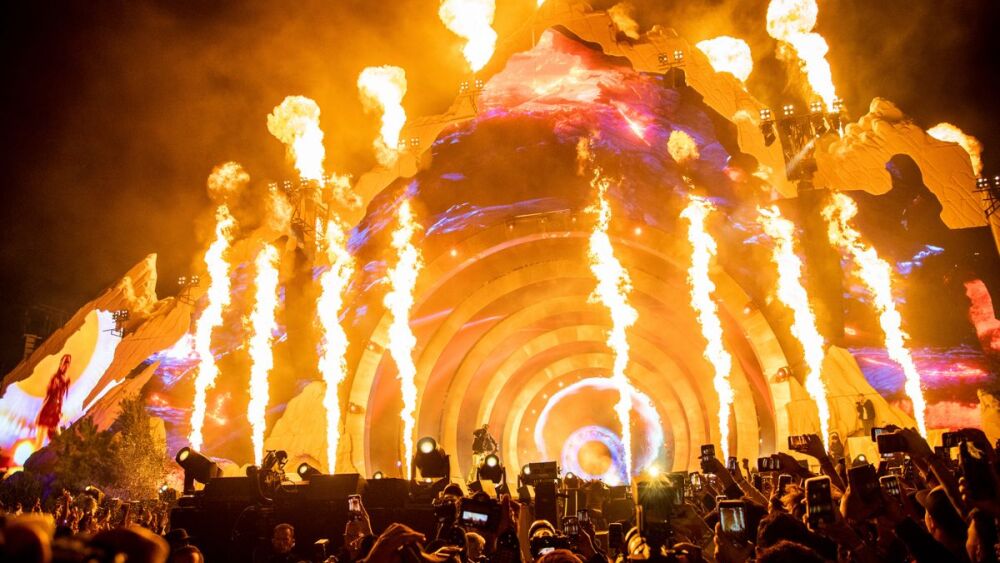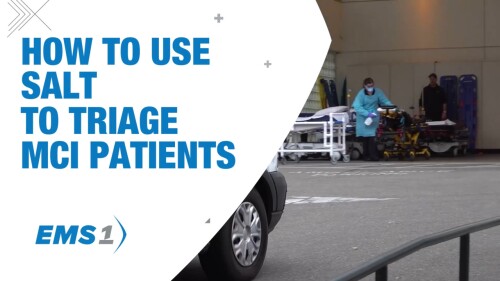Public safety guru and co-founder of Lexipol, Gordon Graham, is known for saying that “predictable is preventable.” While this can be applied to many topics in public safety, it can also be easily applied to planning for mass gatherings.
Anytime you gather a large number of people in one place, there will be medical emergencies. Attendees may fall ill with conditions unrelated to the event (i.e., strokes, heart attacks and appendicitis). They may get injured participating in a race or they may be struck by food-borne illnesses. Any and all manner of illness and injury may be encountered, but usually in numbers similar to daily life.
It is likely that the municipalities that you live and work in have ordinances requiring the hosts of large or mass gatherings to follow guidelines to protect the health and safety of their event participants and spectators. The rules vary, but most require having some level of medical assistance available to attendees. More sophisticated ordinances link the size of the crowds and what they will be doing to the medical capabilities required.
The National Association of EMS Physicians (NAEMSP) has published a few documents to help plan for the standard medical coverage needed at large gatherings. Their Position Statement on Mass Gathering Medical Care and the accompanying resource document are open access.
NAEMSP also offers a “Mass Gathering Medical Care Planning: The Medical Sector Checklist” as well as a chapter about mass gatherings in its Clinical Practices and Systems Oversight textbook. Both are available at the NAEMSP store.
Transitioning standard event operations to an MCI
An important but often overlooked step in mass gathering planning, though, is transition of the medical care from standard event operations to a mass casualty incident (MCI). An example of how a large gathering turns into an MCI occurred Nov. 5, 2021, in Houston, at the Astroworld Festival. Ten people died and dozens more were injured when the crowd surged and rushed the stage area. Although the company providing medical coverage for the two-day concert had 90 physicians, paramedics and nurses on-site, along with five ambulances stationed at the venue, they were quickly overwhelmed. Some reports indicate that there were as many as 12 cardiac arrest resuscitations going on at once.
It is much too early to know what really happened on the grounds of the concert, but several sources have cited a breakdown at the point the planned event became an MCI. Take this opportunity review how your own community and EMS agency prepare for a special event and consider if the plans include these important elements.
1. Calling in the troops
How do the medical event coverage personnel know when they should call for more help and how do they do it? What number of simultaneous medical emergencies is their event plan designed to manage?
The plan should also be clear on who is designed to make the call and how they will do it. Will they simply dial 911 or do they have authority to contact your communication center on a radio frequency? Don’t forget to plan for a back-up method for them to get in contact with dispatch. We all know how easily cell phone networks get jammed when something bad happens.
2. Communication systems
Speaking of communications, early reports of the Houston concert tragedy claim that the Houston Fire Department did not have effective communication with the on-site event medical coverage staff once the disaster started to unfold.
Each system will have to figure out the best way to ensure a seamless line of communication between agencies, but options may include giving them access to your primary dispatch frequency or designating other repeated or networked tactical or mutual aid channels.
Fireground and other non-repeated frequencies may be considered if their coverage is adequate for the response area. As indicated previously, cellular phone systems may not be reliable and should not the primary mean of communication.
3. Venue and event assessment
Not only should the organization providing the event coverage perform an assessment of the event and the location hosting the event, but that assessment should also be shared with EMS and other public safety agencies that may be called upon to respond for an emergency. The assessment should include details such as:
- Total number of attendees and participants
- Presence of alcohol
- Mobility of crowd (sitting in an arena or roaming festival grounds)
- Duration of the event
- Food and water
- Possibility of weapons or illicit drugs
- Known high-risk activities (motor vehicle races, fireworks, extreme sports, etc.)
4. Ingress and egress route planning
In the event of an MCI, local EMS, law enforcement and fire units will flood into the area. At the same time, hundreds or thousands of event attendees may be attempting to leave the incident. Avoiding a traffic jam will be key. Designated routes for arrival and departure of ambulances should be pre-planned and clear to event planners and area EMS leaders. Law enforcement should be prepared to protect those routes and keep them clear.
5. Patient destination planning
Advance consideration of the destinations to which patients may be transported is also critical. Identify the area emergency departments, stand-alone clinics and other care facilities that may be able to accept red, yellow, and green patients. Keep in mind that many patients will arrive at the closest hospitals by means other than EMS. Prepare for them to be overwhelmed. The patient destination plan should also include early notification of each facility so that they can be prepared. Consider including the regional healthcare emergency preparedness coalition in planning and incident notification. They may have plans to help the healthcare system communicate and distribute patients more effectively.
6. Leadership and liaison
When a special event transitions to an MCI, the leadership must also transition. In many cases, the event medical staff are not suited to take that role and command of the incident will transfer to the authority having jurisdiction. Plans should include how incident command will be transferred and what role the event medical staff leadership will fill in the ICS structure. Will their teams be considered a division, branch, group or unit of your MCI response?
Another option is to retain a member of the event medical staff in the command center as a liaison to share information about the event and the venue. The team leaders can also share important information about their equipment, supplies and team capabilities.
7. Above all, communicate
Regardless of how in-depth you go with your planning, the key is to get lines of communication open. Service leaders, hospital management, medical directors and event team coordinators know who each other are and be on the same page before the event begins. You’ve heard it before, the incident scene is not the place to be exchanging business cards.
Stay safe out there.
This article, originally published in November 2021, has been updated.















